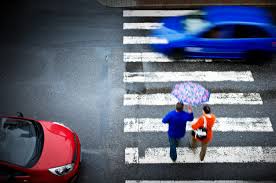It’s the oldest and most basic form of transportation — walking — and more people are doing more of it to get fit or stay healthy. But there’s new evidence today that even walking across the street is getting more dangerous.
For the second year in a row pedestrian fatalities are on the rise. The new Governors Highway Safety Association reported in February that there were 5,984 pedestrians killed in 2017
What is the reason for the increase?
- Distraction of both the driver of the vehicle and the pedestrian.
- Increase in the number of miles driven due to lower fuel prices.
- Increase in the number of portable smart devices used by pedestrians….phones, pads, ear buds, etc.
“We are crazy distracted,” says Melody Geraci, deputy executive director of the Active Transportation Alliance, a Chicago group advocating for better walking, cycling and public transportation options. “After speeding and the failure to yield, distractions are the number three cause [of pedestrian fatalities], particularly by electronic devices.”
“Speed is a killer for sure,” says Geraci. “If a pedestrian is struck at 20 miles an hour, they have a 10 percent chance of dying. If they are struck at 40 miles an hour, they have an 80 percent chance of dying.”
Increased use of marijuana is another potential factor causing the increase in deaths. In the seven states that legalized the drug for recreational purposes, as well as the District of Columbia, pedestrian deaths spiked 16.4% in the first half of 2017, according to the GHSA study. At the same time, deaths in other states fell 5.8%
Did you know that 75% of pedestrian fatalities occur at night?
A study last year A new study on distracted walking by American Academy of Orthopaedic Surgeons (AAOS) was released and finds that more than three quarters (78 percent) of U.S. adults believe that distracted walking is a “serious” issue; however, 74 percent of Americans say “other people” are usually or always walking while distracted, while only 29 percent say the same about themselves.
This sense of “it’s not me, it’s you” cuts across a range of distracted walking behaviors:
- 90 percent say they see walkers talking on the phone (and 37 percent admit doing so themselves)
- 88 percent are engaging in conversation (vs. 75 percent themselves)
- 88 percent are listening to music (vs. 34 percent themselves)
- 85 percent are using a smartphone (vs. 28 percent themselves)
- 64 percent are generally “zoning out,” or not focused on walking (vs. 38 percent themselves)
Originally posted on the Idealease Safety Bulletin

